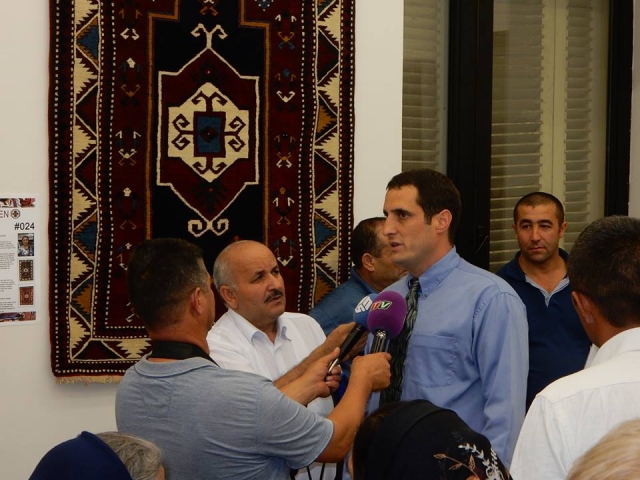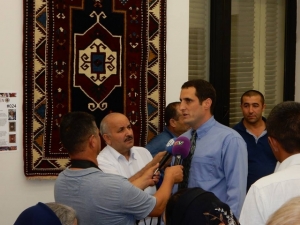ReWoven & Beyond, Republished in Memory of the Smith Family
INTERVIEW
Republished in memory of Ryan Smith and his family. [originally published 9/17/2015)
Meet Ryan Smith, the founder of reWoven, an amazing project to revitalize Azeri carpet-weaving traditions based in Marneuli, Georgia.
Do you have a favorite overall design, element or set of colors in what your people have produced so far?
I honestly love every single rug that our ladies have woven. The beauty of each rug is not limited to its final appearance, but includes the story of the woman who wove it and its creation process.
I have the pleasure of choosing which designs we will revive from this region’s collection of antique rugs. I choose the rugs that catch my eye because of their unique beauty, and that I hope will catch the eye of others. One of my favorites so far is what we call the “Early Chelaberd”. It dates to the 18th century with only a few surviving original examples. It has a bold flower, sunburst medallion in the center of the rug that radiates life and beauty. Its rich red field looks absolutely regal.
I select from designs that were woven locally, but generations ago. There is very little recognition of these designs within the current generation. I show the designs to the weavers, and sometimes I let them choose which design they want to weave. And I always encourage the weavers to use the design as a guideline, to add their own creative ideas. And they always do! They switch colors and add their own little unique elements. At the same time, rug weaving has never been an art form of pure personal expression. It has always been deeply rooted in tradition and repetition. That is why there are numerous examples of the same antique designs. Women wove what they saw on their own floors from generations past. It is rare, if not impossible, to find an antique rug that does not have another example that looks extremely similar to it.
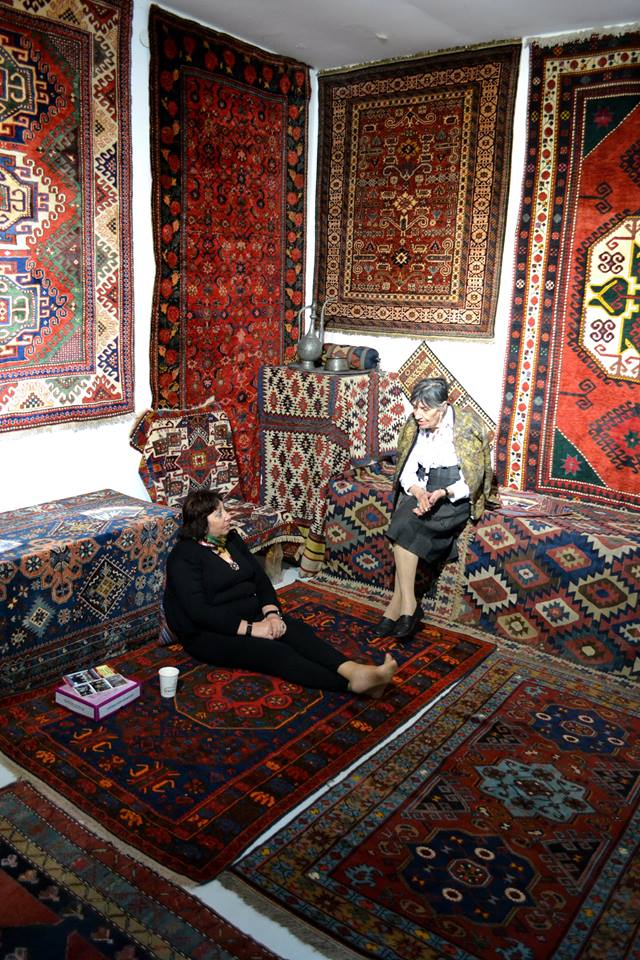
What would be your dream success story for this endeavor, either in the life of one weaver or overall? Will there come a time when you “work yourself out of a job”, i.e. leave it to them? What might that look like?
Not to sound cliche, but this project has very much been a journey. It is impossible to predict what its final destination will be. Ideally, it would be a sustainable project with local weavers, managers, and sales. But this ideal may only remain a dream. In the early stages, there were many times that I thought for sure it would fail. Honestly, I never could have hoped that we’d reach the level of success we are at today. You have to remember that this art is one final breath away from being extinct in this region. This includes not only the expertise to weave rugs, but also to acquire the necessary materials to produce them. The economic and cultural forces that have contributed to this craft’s demise are formidable. Weaving a rug is naturally a very time consuming process, much less all the other material, transportation, marketing, design, and washing expenses involved. The sale price of the rug needs to be significant enough to exceed all of these expenses.
In addition to the economic challenges, there is surprising cultural resistance within the community. While the broader Azerbaijani and global community value the beauty of this woven art, young women in the village are not interested in continuing the tradition. They see rug weaving as something only for the older generation, not for a modern, young woman. Plus, there is the extensive effort that is required to weave a rug. Both of these factors are significant obstacles to motivating the younger generation to continue the craft.
I would love to work myself out of a job, but it does not look possible in the immediate future. I learned about rug weaving when I lived in Azerbaijan 10 years ago. While I do not weave our rugs, I am involved in every other step of the process. I procure the yarn, select and draw the designs from historic sources, interact with the weavers, and oversee the finishing process of the rugs, never mind all of the marketing and sales. Because of my extensive experience in rug culture, I have a unique skill set to offer this project that is not immediately transferable.
Again, only time will tell the future form this project will take. But we are all enjoying the journey. Each completed rug is another success. It is one more beautiful representation of the women and their community, and the benefit that it brought to them. We will continue to enjoy each woven creation, whether it is our last, or there are hundreds to follow.
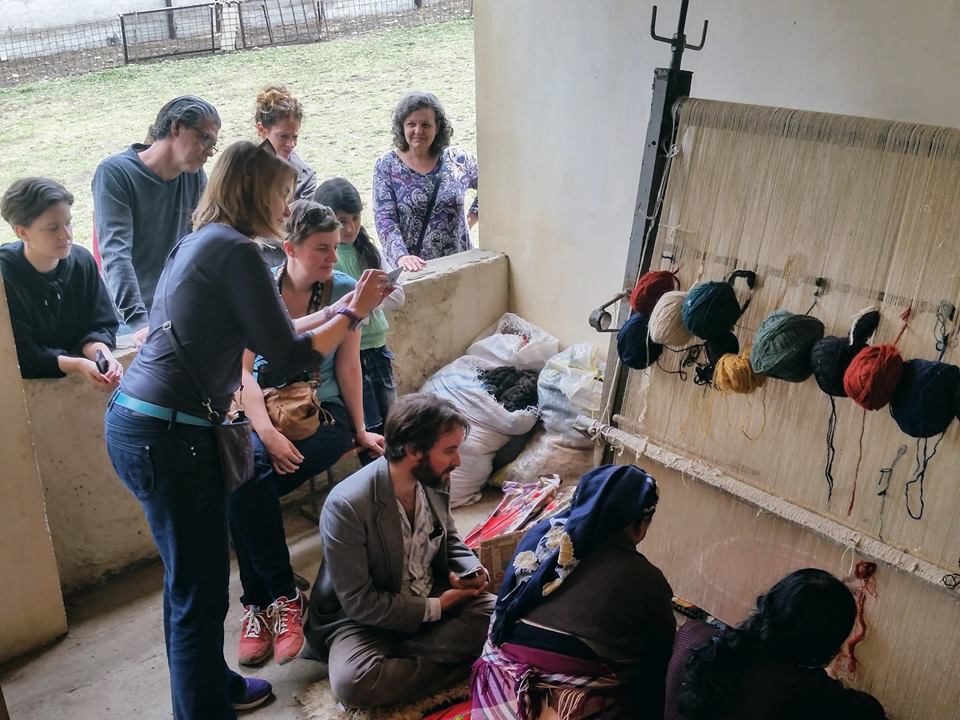
How has the project impacted the weavers’ lives or those of their families, communities, etc? What examples do you have of this?
First and foremost, the weavers are making more money for their weaving than they ever have before. Hence they are able to provide more for their family through this craft. Additionally, there are more women weaving than when we started the project. Several of our weavers had not woven for ten or fifteen years before they wove a rug for reWoven. So the weaving culture has taken small steps toward revitalization.
These steps also have an impact on the broader community. When they first see our rugs, they assume they are antiques. They immediately recognize that the designs and colors are not the synthetic examples of decades past, but represent the natural dyes and intricate designs of centuries past. They take pride in seeing this art revived and promoted to the world.
Additionally, we have just committed funds from the proceeds of the project to remodel a school in one of the villages where our rugs are woven. Kids will return to school on September 15th to a school with fresh paint and new windows and doors. It’s our absolute pleasure to give back to the community beyond the preservation of rug weaving.
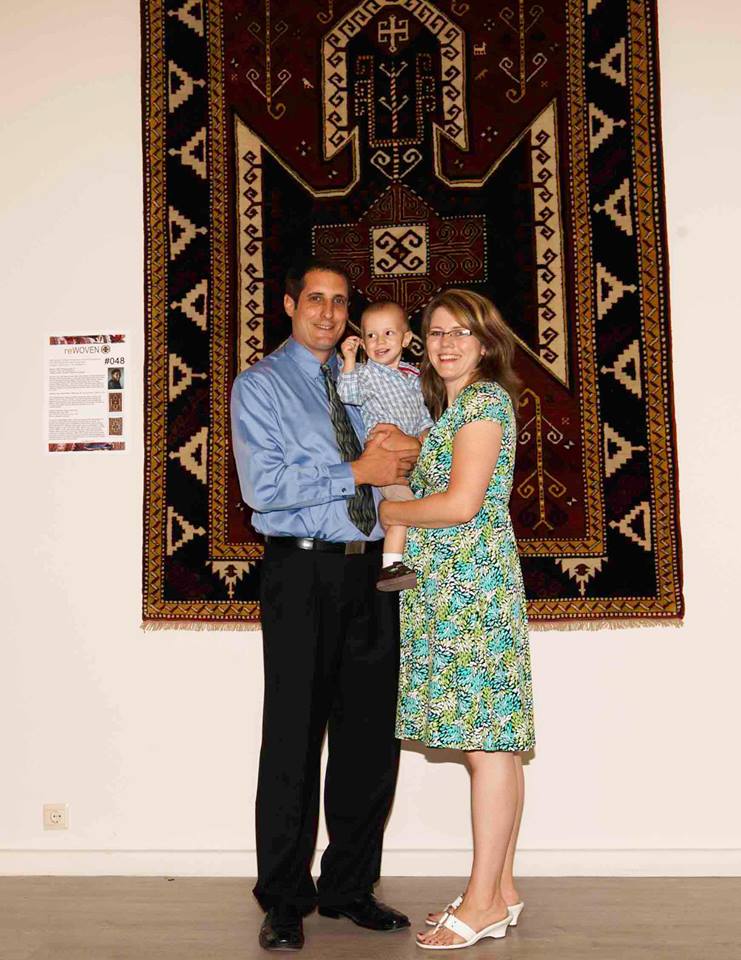
Ryan with wife Lora and son Caleb
What might come next for YOU after this, if you can see that far—further growth in the same area, or something entirely different?
I honestly have no idea. I’m happy to continue with this project for years to come and see what form it will take. I will enjoy every step along the way and all of the amazing people with whom I get to work alongside. My family would be happy to live in Georgia for years to come, and specifically in Marneuli. This region has a strong agriculture and livestock sector. If I wasn’t involved in rug weaving, I’d likely see what role I could play in that sector.
Are there other areas of culture, the arts, etc. which could be supported and encouraged in similar ways?
I think every form of art and culture is immensely valuable and worthy of support. I am a big advocate of finding financially sustainable ways to accomplish this. It is important for a tangible art form to establish a market for it artisans. This is a big step towards insuring the preservation and development of the art.
www.reWoven.net for more details.
Tony Hanmer runs the “Svaneti Renaissance” Facebook group, now with over 1200 members, at
www.facebook.com/groups/SvanetiRenaissance/
He and his wife also run their own guest house in Etseri:
www.facebook.com/hanmer.house.svaneti
By Tony Hanmer
